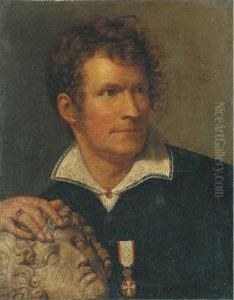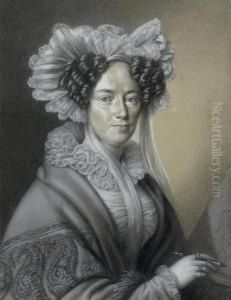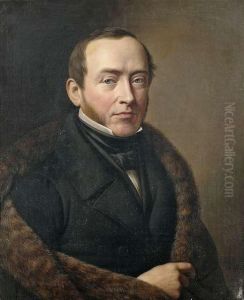Rudolf Suhrlandt Paintings
Rudolf Suhrlandt was a notable German portrait painter born on December 10, 1781, in Ludwigslust, Mecklenburg-Schwerin. He emerged as a prominent figure in the early 19th-century European art scene, particularly known for his skill in capturing the essence and character of his subjects. Suhrlandt's artistic journey began under the guidance of his father, who was a court painter. This early exposure to the world of art significantly influenced his career path and stylistic development.
Suhrlandt further honed his skills at the prestigious Academy of Fine Arts Vienna and later at the Academy of Fine Arts in Dresden. His education and training under such esteemed institutions were instrumental in refining his technique and understanding of the artistic trends of his time. Suhrlandt's travels in Italy, a common practice among artists of his era seeking inspiration and mastery, also had a profound impact on his work, enriching his color palette and compositional strategies.
Throughout his career, Suhrlandt received numerous commissions from the nobility and prominent figures of society, testament to his reputation and skill as a portraitist. His ability to depict his subjects with both accuracy and empathy won him admiration and respect. Beyond portraiture, Suhrlandt also contributed to the genres of history and religious painting, though these works are less known today.
Suhrlandt's legacy is marked by his contribution to the German Romantic movement, although his style also exhibits elements of Neoclassicism, reflecting the transition in European art during his lifetime. His works are characterized by their detailed realism, nuanced portrayal of personality, and a certain warmth that invites viewers to connect with the subjects. Suhrlandt served as a professor at the Academy of Arts in Ludwigslust, where he influenced a new generation of artists, imparting his knowledge and passion for art.
Rudolf Suhrlandt died on May 15, 1862, in Schwerin. His body of work remains a significant part of German art history, offering insights into the cultural and social milieu of his time. Today, Suhrlandt’s portraits are held in high esteem, collected by museums and art enthusiasts around the world, celebrating his enduring contribution to the art of portraiture.



